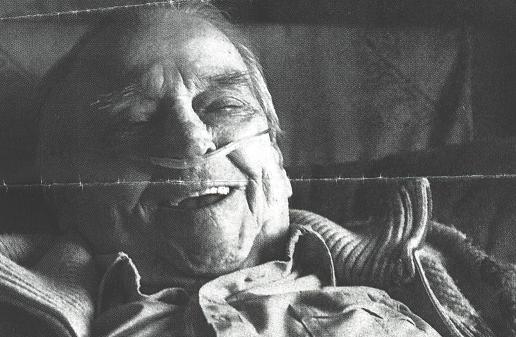Patrick G. O'Connor Receiving Station |
It was Paul O'Connor's day off, and he was sleeping in when 353 Japanese aircraft arrived at Pearl Harbor. During the weeks preceding December 7, 1941, the naval base had started running bombing drills. So when O'Connor looked through the window from his bunk bed and saw a sky filled with Japanese planes, he thought it had to be American fighters in camouflage. Then O'Conner saw the rising sun emblazoned the attackers and knew it was no drill. A few moments later, he witnessed the explosion of the USS Arizona. Moment later, the alarm sounded at his receiving station, and everyone gathered in a meeting room. "It was a hell of a mixed up day, I'll tell you that", O'Connor said. "All they'd have had to have done was bring in their troops, and they could have taken it over." Sixty years after the attack, the 77-year-old has hazy memories about much of the two and a half hour ordeal. However, he said, he remembers some of the events as if they happened yesterday. O'Connor, who was a 17-year-old baker striker at the time, clearly remembers when he and two other men who were at the receiving station were assigned to guard Mary's Point, at liberty dock. He said he and the two others stood on the dock while a Japanese plane buzzed so close that they could see the pilot's eyes. "We were firing at him with our 30.06 rifles. Whether anybody hit5 him, I don't know, but he kind of dropped his wing to the right, and then he blew up," O'Connor said. Immediately after the attack, O'Sonnor was assigned to guard an oil tank field. He spent the days following the attack baking nonstop. The mess hall was the only one left standing after the bombing. "We were equipped to feed 500. We fed over 5,000," O'Connor said. The night of December 7 was even more scary to O'Connor than the attack. While he baked at the mess hall, he could hear the sounds of three planes flying and he didn't know whose planes they were. The planes turned out to be American, and they were shot down by US ground troops by mistake, he said. "That night is the only time I really got scared," O'Connor said. "If I can see something, it doesn't scare me." O'Connor stayed at Pearl Harbor and baked for three more years after the attack. "The guy who taught me to bake was really a good baker," he said. "I'm not bragging, but I was a good baker." O'Connor was also a witness to another significant chapter of World War II. He was less than 10 miles away from the coast of the Bikini Islands when the United States conducted the fourth and fifth tests of the atomic bomb. The USS George Clymer, a troop transport ship, rocked violently following both tests in the summer of 1946. "It was the most beautiful thing you ever want to see the rose, the red and the orange," O'Connor said about witnessing the detonations. "It was just one great big mushroom." O'Connor returned to the United States in November 1946 and was discharged on March 17, 1947. "I, being Patrick O'Connor, and it being St. Patrick's Day, you might suspect there was quite a party," he said. The discharge ended his naval career. He spent 1947 to 1949 tending bar and farming in Montana. In 1949, he moved to Pocatello, Idaho, married his wife, Joyce, and started working construction. He was a construction worker for 13 years and sold trucks and cars for 30 years. He owned Shamrock Auto Sales in Pocatello for 15 of those years. It is with the deepest sympathy that we share the news that Mr. O'Connor passed away on January 1, 2002. |
Information provided by Joyce O'Connor. |
